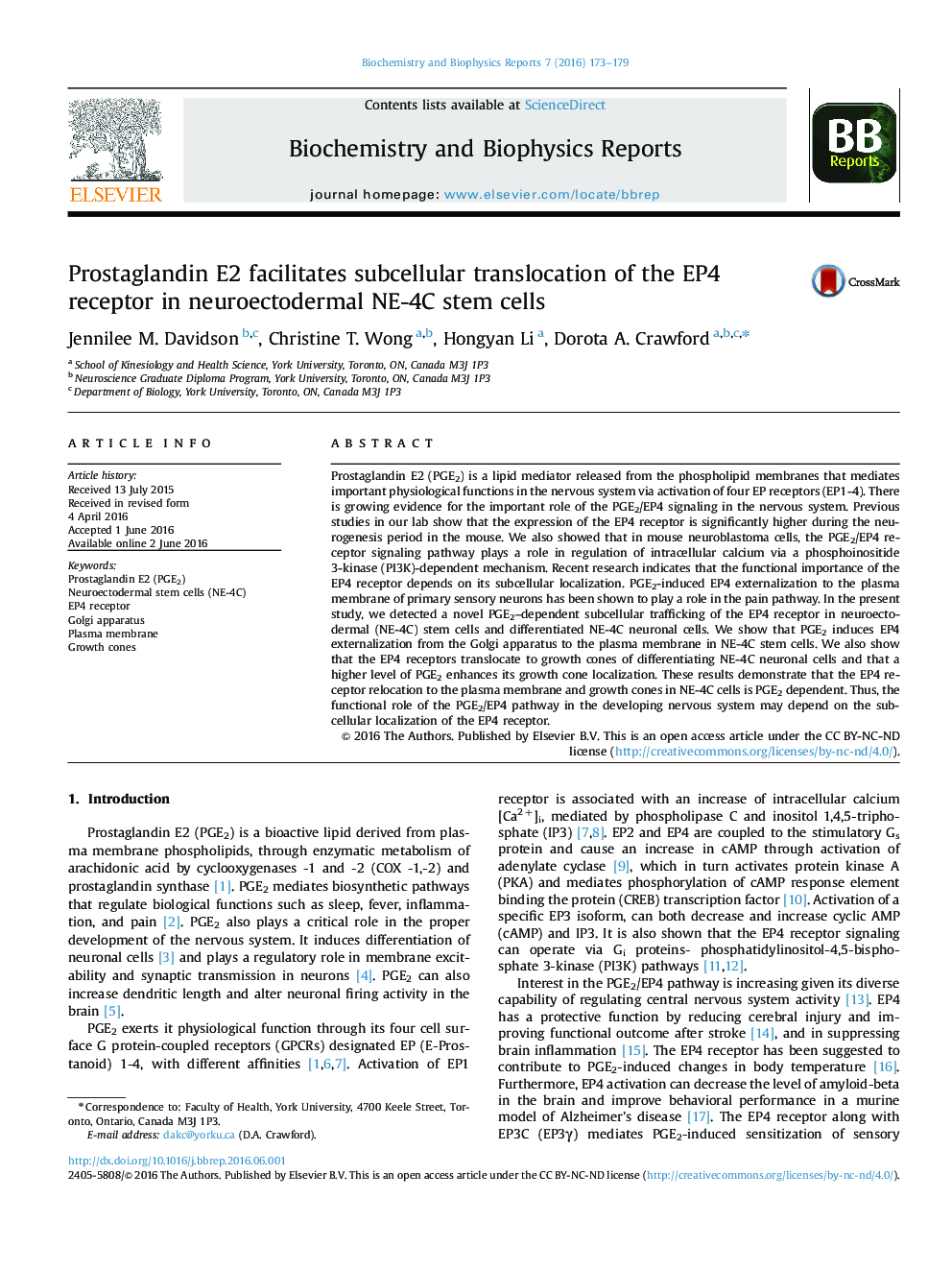| Article ID | Journal | Published Year | Pages | File Type |
|---|---|---|---|---|
| 1941617 | Biochemistry and Biophysics Reports | 2016 | 7 Pages |
•Function of the PGE2/EP4 pathway depends on the localization of the EP4 receptor.•PGE2 induces EP4 trafficking from Golgi to plasma membrane in NE-4C stem cells.•EP4 receptors translocate to growth cones in differentiating NE-4C neuronal cells.•Higher PGE2 level enhanced EP4 trafficking to growth cones of NE-4C neuronal cells.
Prostaglandin E2 (PGE2) is a lipid mediator released from the phospholipid membranes that mediates important physiological functions in the nervous system via activation of four EP receptors (EP1-4). There is growing evidence for the important role of the PGE2/EP4 signaling in the nervous system. Previous studies in our lab show that the expression of the EP4 receptor is significantly higher during the neurogenesis period in the mouse. We also showed that in mouse neuroblastoma cells, the PGE2/EP4 receptor signaling pathway plays a role in regulation of intracellular calcium via a phosphoinositide 3-kinase (PI3K)-dependent mechanism. Recent research indicates that the functional importance of the EP4 receptor depends on its subcellular localization. PGE2-induced EP4 externalization to the plasma membrane of primary sensory neurons has been shown to play a role in the pain pathway. In the present study, we detected a novel PGE2–dependent subcellular trafficking of the EP4 receptor in neuroectodermal (NE-4C) stem cells and differentiated NE-4C neuronal cells. We show that PGE2 induces EP4 externalization from the Golgi apparatus to the plasma membrane in NE-4C stem cells. We also show that the EP4 receptors translocate to growth cones of differentiating NE-4C neuronal cells and that a higher level of PGE2 enhances its growth cone localization. These results demonstrate that the EP4 receptor relocation to the plasma membrane and growth cones in NE-4C cells is PGE2 dependent. Thus, the functional role of the PGE2/EP4 pathway in the developing nervous system may depend on the subcellular localization of the EP4 receptor.
